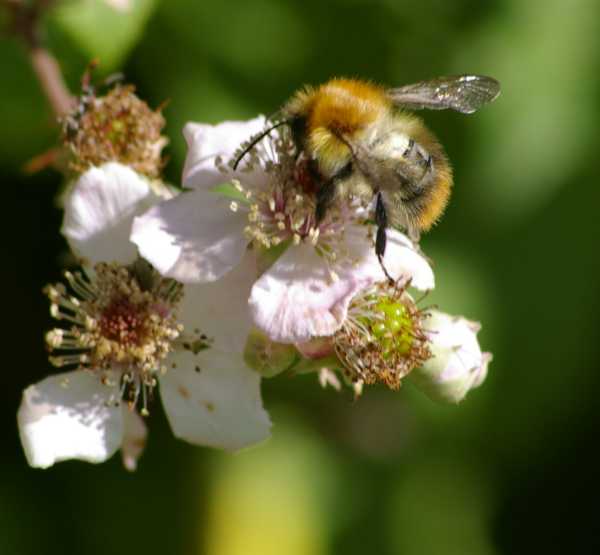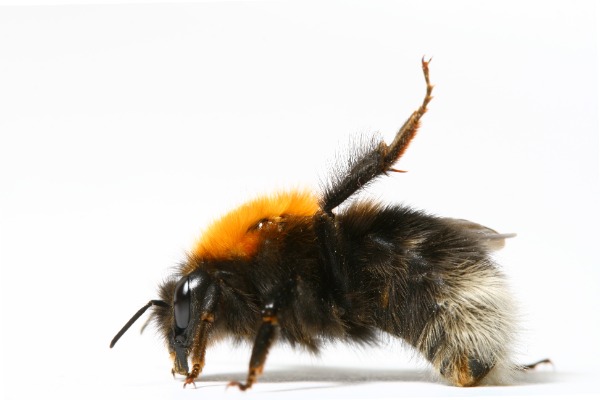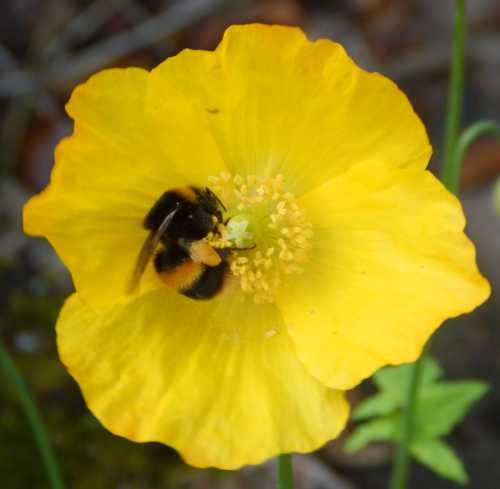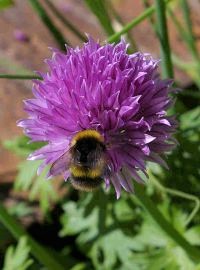Can You Pet A Bumble Bee And Do Bumble Bees Make Good Pets?
Bumble bees are gorgeous little creatures, the 'cuddly teddy bear' of the insect world. I can genuinely understand the temptation to want to touch and stroke these adorable, furry creatures.
Although there are occasions when it might be possible to 'pet' or rather, gently stroke a bumble bee, here are reasons why it is not wise, and it's best to leave the bee alone.
In addition, bumble bees do not make good pets (even if they look as if they might), despite occasional stories suggesting otherwise.
Stroking A Bumble Bee
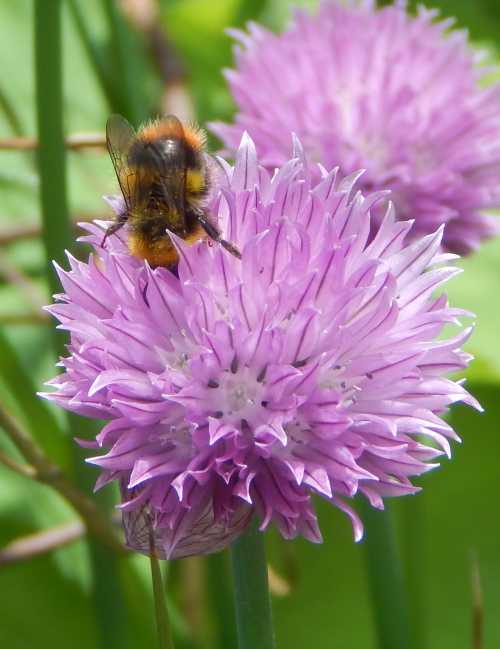 Early bumble bee - Bombus pratorum foraging on chives.
Early bumble bee - Bombus pratorum foraging on chives.If a bee lands on you, or you assist a bee in some way, it's very easy to assume that if you can get away with stroking it, then the bee actually likes it.
However, it's best to leave bees alone to prevent causing unnecessary stress or even damage to delicate wings, particularly if you have traces of dirt, skin oils or fragrant matter on your own hands and fingers, or rough skin.
It should be noted that bumble bees have a variety of hair types on their bodies.
Hairs are important in pollen collecting, thermo-regulation and electroreception1, including sensing flowers: a bumble bee can detect the electric fields of flowers via the deflections of many tiny mechanosensory filiform hairs on its head and body2.
I therefore think it's wise to remember that the hair on the body of a bumble bee plays a crucial role in its survival.
On top of which, if you try to pet a bee, an accidental stinging incident could occur.
Bumble bees do not make good pets
It's tempting to think that bumble bees could, with their cuddly (even friendly) appearance, make perfect pets.
However, the life cycle of a bumble bee is short - literally only a few weeks for workers, and nearer a year for a queen (much of this spent underground in hibernation / diapause).
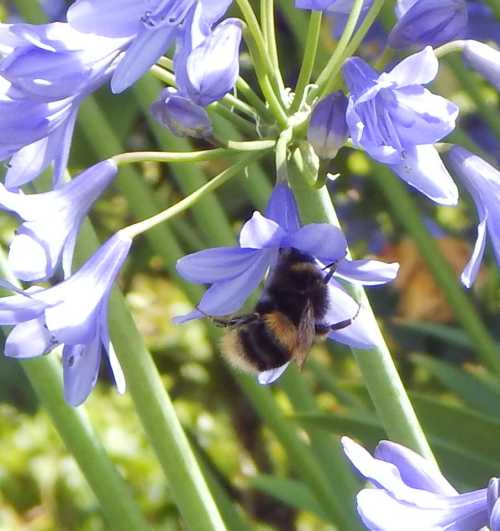 It's tempting to think that bumble bees could, with their cuddly, even friendly appearance, make perfect pets!
It's tempting to think that bumble bees could, with their cuddly, even friendly appearance, make perfect pets!During the short life span, a bee has much to do!
Queens absolutely must progress to raise new queens (gynes) if they are to ensure future generations of bumble bees.
Queen activities include establishing nests, providing food for the first workers to be reared, creating wax cups, defending the nest and herself, and of course laying eggs and rearing young.
New queens must feed, mate, survive and find a safe place to overwinter.
Workers should also be left alone, because they perform vital roles within the colony, collecting food for the young, defending the nest, and keeping it hygienic.
Given all this, and general bee decline, I think it's a grave mistake to keep a bumble bees from their tasks.
If I feed sugar water to bumble bee can I keep it as a pet?
I really believe sugar water should only ever be a last resort offer to bumble bees that are, for whatever reason, struggling to survive and in need of help.
In most scenarios, it's best to leave bees alone, and also remember that a motionless bee is not necessarily one requiring assistance: after all, bees sleep and rest.
There is no need to leave dishes of sugar water around the yard for bumble bees.
Instead, focus on providing nectar-rich flowers, because nectar has micro-nutrients important for bees. Furthermore, flowers also provide pollen.
Bumble bees have survived thousands of years without being fed by humans.
You can read more on my page about feeding sugar to bees.
But aren't honey bees 'pets'?
Honey bees are not 'pets' any more than a cow might be considered a pet. They live a separate life in a hive, sometimes miles away from the beekeeper who owns the colony (see - Are honey bees domesticated?).
Beekeepers wear protective equipment to minimise the risk of being stung, they don't spend time trying to 'pet' individual bees.
The best way to help bees...
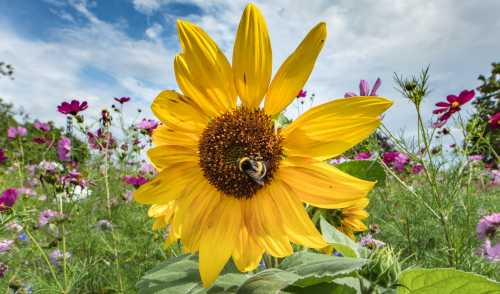 Make your garden bee-friendly to help bees!
Make your garden bee-friendly to help bees!To help bees, the single most important thing we can all do is include as many bee-friendly flowers and plants in your garden as possible. This will help to feed bees and ensure their survival.
References
1. Sutton GP, Clarke D, Morley EL, Robert D. Mechanosensory hairs in bumblebees (Bombus terrestris) detect weak electric fields. Proc Natl Acad Sci U S A. 2016 Jun 28;113(26):7261-5. doi: 10.1073/pnas.1601624113. Epub 2016 May 31. PMID: 27247399; PMCID: PMC4932954.
2. Zakon HH. Electric fields of flowers stimulate the sensory hairs of bumble bees. Proc Natl Acad Sci U S A. 2016 Jun 28;113(26):7020-1. doi: 10.1073/pnas.1607426113. Epub 2016 Jun 20. PMID: 27325771; PMCID: PMC4932987.
If you found this page helpful or interesting, I'd really be grateful if you would share it with others - if not this page, perhaps another, such as Gardening For Bees.
Thank you so much :) .
